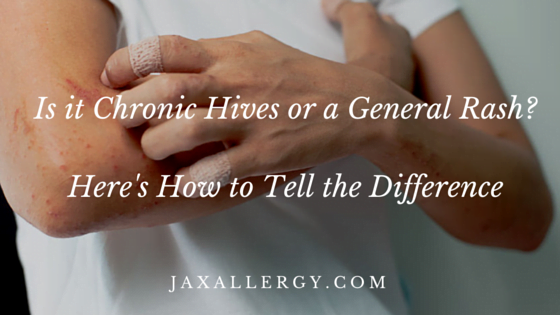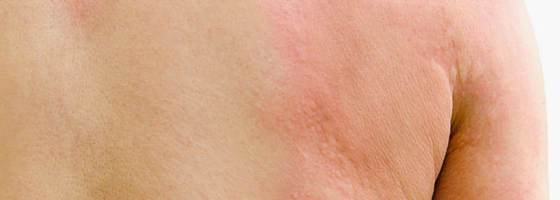Is it a Rash or Chronic Hives? Here’s How to Tell

Chronic hives are more than an uncomfortable itch begging to be scratched. Often confused with other types of rashes, chronic hives are marked by frequent outbreaks that may not have an identifiable trigger.
This skin condition affects around 20% of the population at some point in their lives. While typically not life threatening, the repetitive nature of chronic hives can cause significant discomfort and affect a person’s quality of life.
Read on to learn how to identify this skin condition, its symptoms and the appropriate forms of treatment.
What are Chronic Hives?
Chronic hives, also known as chronic urticaria, are hives that come and go for more than 6 weeks.
It’s difficult to determine exactly why hives occur, though some sufferers may be able to pinpoint certain trigger foods, insect bites or medications as the cause. Chronic hives may also occur in conjunction with autoimmune diseases such as lupus, thyroid disease or rheumatoid arthritis. Other factors such as heat, stress, alcohol and even exercise can bring on a case of urticaria in susceptible individuals.
While anyone at any age can have a hive outbreak, it’s young adults and females that are most at risk for developing chronic hives.
What Do Chronic Hives Look Like?
Chronic hives often look like typical hives. An outbreak of hives can manifests all over the body but are usually most prominent on the arms, legs and torso. They typically produce pink, red and white puffy welts, which vary in size and shape. Some may be as small as a pen tip while others swell to the size of a dinner plate. Hives can form individually or connect to create larger patches.
The welts typically itch and may cause a brief painful, burning or warm sensation in the involved area.
How Can I Distinguish Them From Other Rashes?
Unlike other rashes, chronic hives often migrate around the body and usually respond well to allergy medications. Chronic hives are sometime associated with with angioedema, a form of tissue swelling that occurs deep in the skin. Angioedema causes swelling of the eyelids, mouth, hands, feet and sometimes can involve the throat.
The key difference between hives and other skin rashes is that each individual hive lesion rarely last more than 24 hours in one place and resolve without leaving marks or bruises. Most other rashes will last more than 24 hours in one spot and resolves slowly, leaving marks, discoloration or bruises.
How Can An Allergist Help Me Manage Chronic Hives?
Board-Certified Allergists & Immunologists are experts in the diagnosis and management of chronic hives. In addition to helping you better understand your condition, they can often identify common aggravating triggers for your rashes. Chronic hives can take weeks-years to resolve and often place a significant burden on quality of life. To make matter worse, over the counter medications can leave you feeling drowsy.
The good news is that there are several very effective, safe and well tolerated treatment options available. Your allergist can help tailor the best long-term treatment plan to assure you have the most symptom-free days as possible without undesirable medication side effects.
If you are suffering from chronic hives, contact our allergy specialists today and schedule a consultation to discuss the most effective treatments available for you.


